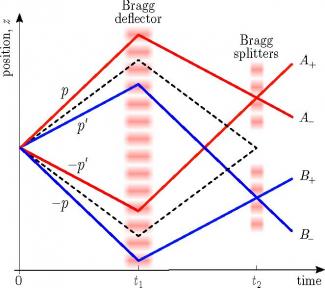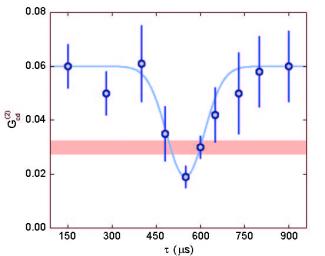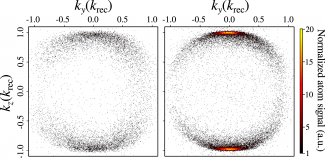We have used a variant of the Hong Ou Mandel setup described below to realize a two-particle interferometer with four input and four output ports as shown in the figure. The source generates atom pairs in a superposition of different momentum states:
|ψ) ~ |p,-p) + |p',-p').
When such a state is injected into the atom interferometer, the probability of detecting an atom at each output port is 1/4, independent of any interferometer phase. The correlations between the different output ports however do vary as a function of the relative phase of the two closed circuits (red and blue in the figure). We have demonstrated this effect in our apparatus. An improved version of this experiment can lead to the violation of a Bell inequality involving the motional degrees of freedom of freely falling massive particles.



